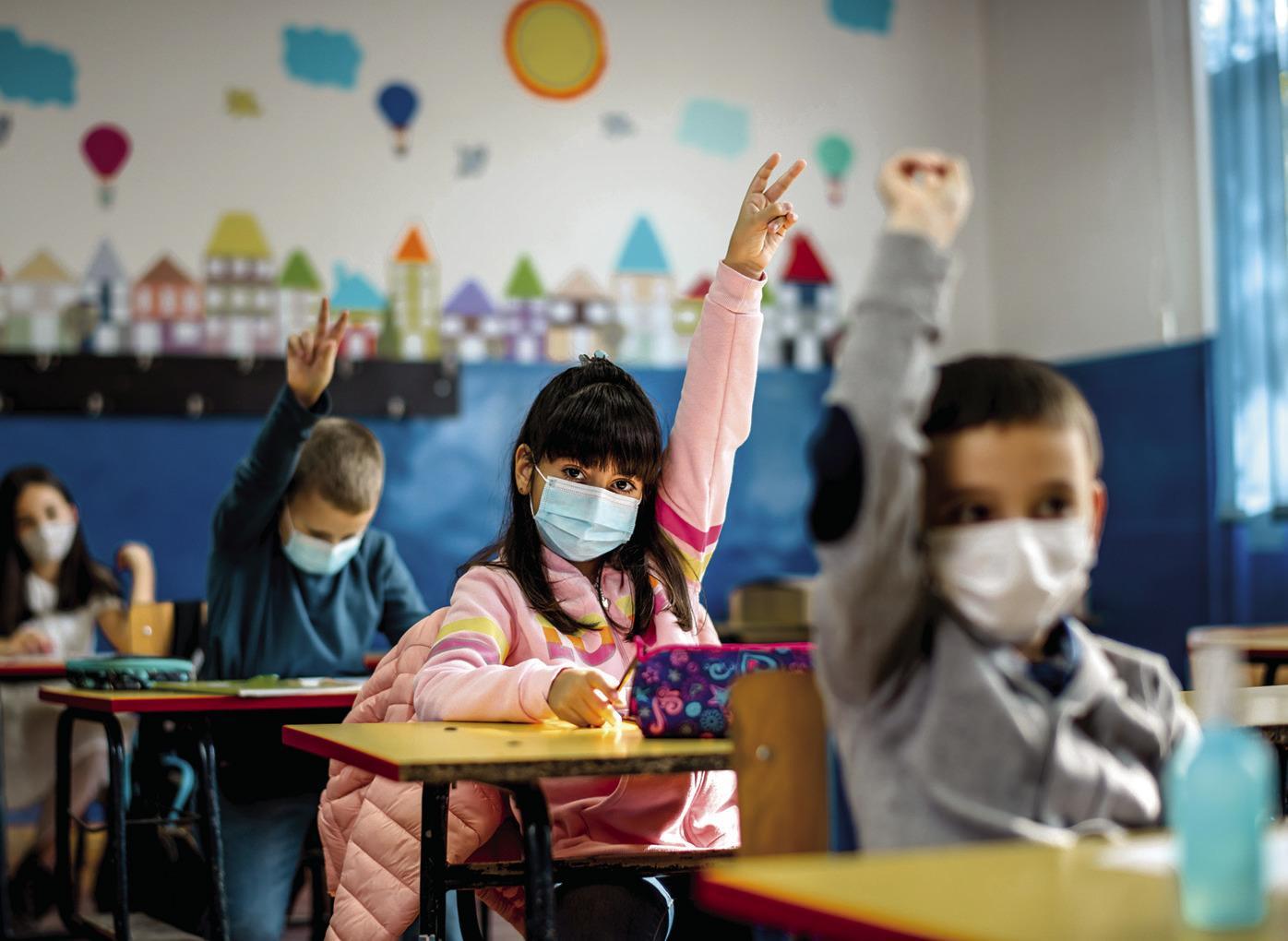
Washing hands and using hand sanitizer is effective in the prevention of viruses, including monkeypox.
Photo from Metro Creative

SAN MARCOS PUBLIC LIBRARY
625 E. HOPKINS ST.
512-393-8200
Answers to Go
Q. I saw on the news a report that something called monkeypox is spreading. Should I be concerned? Is it a virus?
A. According to the Centers for Disease Control and Prevention (CDC), monkeypox is a rare disease caused by infection with the monkeypox virus. Monkeypox virus is part of the same family of viruses as variola virus, the virus that causes smallpox. Monkeypox symptoms are like smallpox symptoms, but milder, and monkeypox is rarely fatal.
First, let’s start with the basics — a definition of “virus.” Although we have been struggling with COVID-19, a virus, for more than two years now, many people are not clear on what a virus is. According to the Encyclopedia Britannica, a virus is an “infectious agent of small size and simple composition that can multiply only in living cells of animals, plants or bacteria. The name is from a Latin word meaning “slimy liquid” or “poison.” There is some dispute about whether viruses meet the criteria for living organisms. They can grow and reproduce, but they do not produce adenosine triphosphate, a compound that drives many processes in living cells. (Seladi-Schulman) Basically, viruses are a type of germ. They’re very tiny, and when they get inside your body, they can make you sick. Viruses cause colds, chicken pox, measles, flu and many other diseases. Unfortunately, antibiotics don’t work on viruses like they do on bacteria. (Nemours Foundation) However, all viruses do not make you sick. Viruses have a very bad reputation, but only a few of them cause disease in humans. Viruses can do extraordinary things such as helping to keep our planet’s ecology balanced and getting rid of dangerous organisms. (Sistere).
As was reported in the San Marcos Record on July 21, “monkeypox is a milder, rash-causing virus in the same family as smallpox.” (Telschow) What has the medical world concerned — and the reason the World Health Organization is keeping an eye on it — is that it is showing up in countries outside of where it has been found in the past. The New England Journal of Medicine reported on July 21 that “The simultaneous identification of cases outside areas where monkeypox has traditionally been endemic highlights the need for rapid identification and diagnosis of cases to contain further community spread.” (Thornhill). Currently, the United States has the highest infection rate in the world.
The critical information you need to know is how to protect yourself. The CDC recommends the following:
• Avoid close, skin-toskin contact with people who have a rash that looks like monkeypox.
• Do not touch the rash or scabs of a person with monkeypox.
• Do not kiss, hug, cuddle or have sex with someone with monkeypox.
• Avoid contact with objects and materials that a person with monkeypox has used.
• Do not share eating utensils or cups with a person with monkeypox.
• Do not handle or touch the bedding, towels or clothing of a person with monkeypox.
• Wash your hands often with soap and water or use an alcohol-based hand sanitizer, especially before eating or touching your face and after you use the bathroom.
For more information about monkeypox, see the San Marcos Record’s article on July 21 or visit the Centers for Disease Control and Prevention at hcdc.gov/ poxvirus/monkeypox/response/ 2022/index.html
• The Nemours Foundation. (n.d.). “Word! virus (for kids)” – nemours kidshealth. KidsHealth. Retrieved July 26 from kidshealth.org/ en/kids/word-virus.html
• Seladi-Schulman, J. (2022, June 24). “Viruses: What are they, and what do they do?” Medical News Today.
Retrieved July 26 from medicalne wstoday. com/articles/158179 #what-are-viruses
• Sistere, M. T. (2021). “Viruses Are Powerful. In The secret life of viruses: Incredible science facts about germs, vaccines, and what you can do to stay healthy” (pp. 3–3). essay, Sourcebooks eXplore.
• Telschow, M. (2022, July 21). “Another year, another virus: monkeypox threat looms.” San Marcos Record, pp. 1–4.
• Thornhill, J. P. (2022, July 21). “Monkeypox virus infection in humans across 16 countries” April–June 2022: Nejm. New England Journal of Medicine. nejm.org/ doi/full/10.1056/NEJMoa2207323
Suzanne Sanders is the columnist for the library. She is the Community Services Manager for the San Marcos Public Library and came from the Austin Public Library in 2015 after having served there as a librarian for over 20 years. She gratefully accepts your questions for this column.











